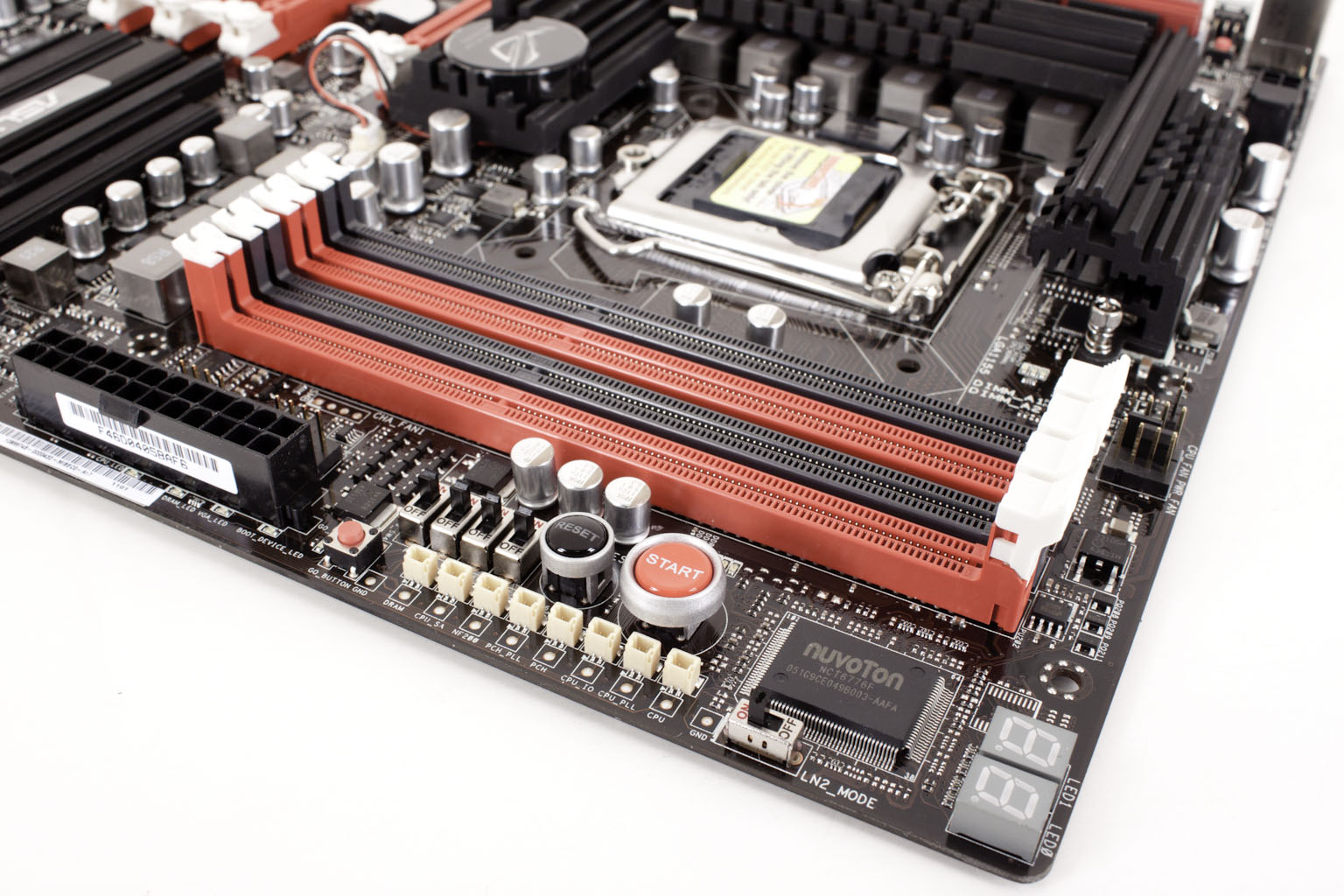The Test System and Comments -
Our test system is built on an open bench. This has two effects on testing. First it allows us to see everything and also to setup and disassemble the test rigs quickly. Second it means that we cannot gauge the potential air flow found in a normal case. The air is pretty stagnant; some may say this is a great neutral testing method and it can be. However, it does mean that the temperature reading taken off of the components are not accurate to what an average consumer would see. This means that your thermal performance will vary from what we see here.
The MIVE is a nice board. It has a great layout and is very easy to work with. The UEFI BIOS makes getting around and finding the settings you need simple and quick. Meanwhile, on the software side, Asus has you covered with their InstALL. The only thing that I do not like about this is that they add in some basic shovelware like Norton and a webconfig application that does nothing but give you the option to install some web games. Still at least you can uncheck these and prevent their installation.
Once you have your OS of choice and all of your drivers installed, you can use Asus’ tools to get the most out of your MIVE. The end user experience is quite nice.
Performance testing overview -
Our testing is a little different than most. We combine both synthetic and real-world applications to simulate the types of performance common to the individual products. For motherboards this means that we run roughly six synthetic tests and two real-world. We will be expanding the real-world testing in the near future. But there is more to performance than just the raw numbers. As there are multiple components and sub-components on a motherboard there each item can have a distinct impact on the way the product will perform once you get it in your system. It is important to note not only the actual results but what they mean to you as a potential consumer. We will try to give this information to you.
But we do not just cover the performance aspects that are measurable. We also talk about the components that might not have a direct benchmark. These are items like Audio Quality, ease of use and installation.

 Asus’ Maximus series has always been a great line for the user than demands top notch performance. We have tested them going all the way back to the original Maximus and each one has brought new performance features to the table. As you have seen in our
Asus’ Maximus series has always been a great line for the user than demands top notch performance. We have tested them going all the way back to the original Maximus and each one has brought new performance features to the table. As you have seen in our 

